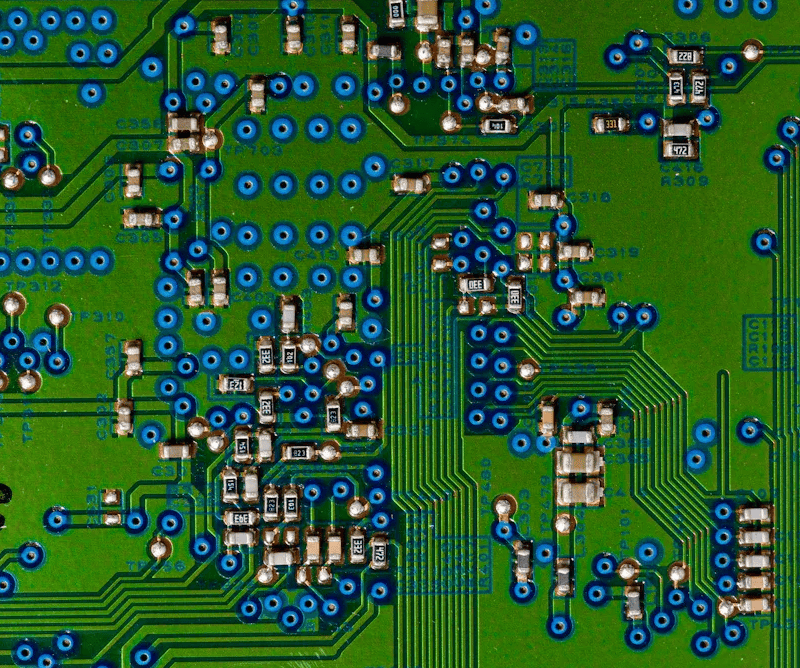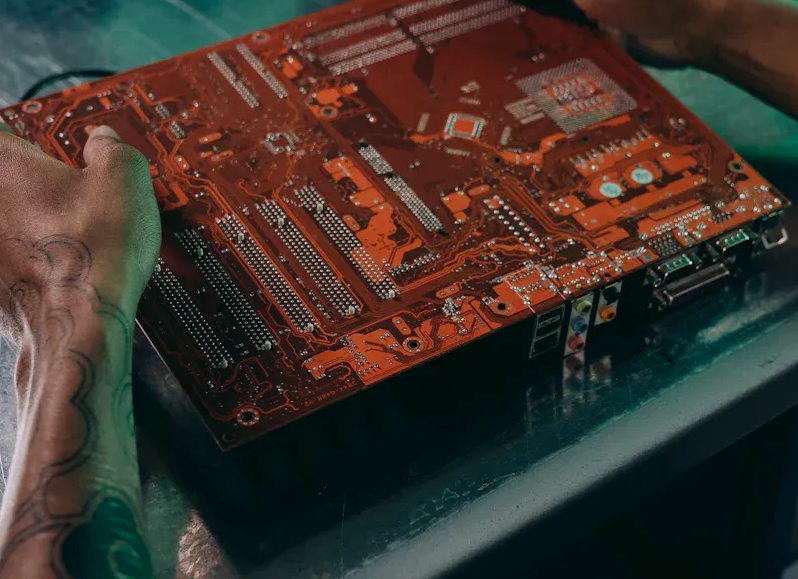
Support Team
Feedback:
support@nextpcb.comDrill holes are crucial for how a Printed Circuit Board works. They help connect layers, hold parts in place, and make the board stronger. Careful drilling has many advantages:

Focusing on precise drilling helps your PCB work well and last longer.
Drill holes are tiny openings in a Printed Circuit Board (PCB). They help connect layers and hold parts in place. Without these holes, modern electronics would not work.
The size and location of drill holes are very important. For example, making the drill size 4 to 5 mil bigger than the final hole helps with copper plating. Machines like NC drills make these holes accurately. These machines follow NC drill files, which tell them where to drill. Accurate drilling keeps the PCB reliable and working well.
Rules from IPC and ASME guide how big and strong the holes should be. These rules make sure the holes last and work properly. New methods like laser drilling and plasma desmearing make better holes. This improves the PCB's overall quality and dependability.
Drill holes in PCBs come in different types, each with a job:
| Type of Hole | Description |
|---|---|
| Through holes | These go through all layers, linking one side to the other. |
| Blind vias | These link an inside layer to an outside layer but don’t go through the whole board. |
Buried vias |
These link inside layers without touching the outer layers. |
| Microvias | Tiny holes, smaller than 0.006 inches, made by lasers to link two layers. |
Through holes are the most common. Blind and buried vias are mostly used in multi-layer boards where space is tight. Microvias are great for small, dense designs, making layouts neat and efficient.
Each hole type helps the PCB work as it should. Knowing their uses helps you design and build better PCBs.
Drill holes help connect the layers of a PCB. Plated Through Holes (PTHs) are lined with metal. This lining lets electricity flow between layers. It ensures the board works properly. Without these, multi-layer PCBs would not support complex circuits.
PTHs also allow parts to be placed on both sides. This is useful for small designs with limited space. Making PTHs is a detailed process and costs more. Still, they are very important for keeping electrical connections in PCBs.
Drill holes hold parts like resistors and capacitors in place. They keep parts steady even if the board moves or shakes. This stability is key for the circuit to work well.
Drill holes also help create vias, which link PCB layers. These links improve how the board works. Drilling must be precise. Even small mistakes can break signal flow. Accurate drilling keeps parts aligned and the board stable.
Drill holes help manage heat by letting it escape. This is important for devices that get very hot. Too much heat can harm parts or shorten their life. Placing drill holes smartly improves airflow and reduces overheating.
Some PCBs use thermal vias to move heat away. These vias are filled with metal to spread heat better. Good heat control makes the PCB work better and last longer.

Drill hole design is key to keep signals clear in a PCB. Badly made holes can cause problems like parasitics. These issues mess up signal flow and lower performance. Changing hole designs can improve impedance control, which is needed for fast circuits. Using microvias and controlled depth drilling helps stop signal reflections from unused via barrels.
Microvias are tiny and have short stubs. They help signals move better by reducing interference. These changes make signals travel smoothly between layers.
Tip: Focus on cutting parasitics and controlling impedance to boost signal quality.
Good drill hole accuracy makes PCBs stronger and last longer. Proper drilling keeps parts secure and prevents mechanical problems. If holes are the wrong size or in the wrong spot, the board can weaken. This can cause problems during use or while being made.
Hole shape and surface smoothness are important for strength. Advanced methods like reaming improve these features. This results in tougher and more dependable boards.
Precise drill holes help make PCBs faster and with fewer mistakes. Accurate holes can save time and materials during assembly. Studies show that drilling tools affect hole quality. Features like hole shape and smoothness matter a lot.
| Study Details | Findings |
|---|---|
| Research shows drilling tools impact hole quality. You need to focus on shape and smoothness. | Drilling tools improve hole quality more than pre-preparation methods. |
| ANOVA checks how different factors affect hole accuracy. | ANOVA confirms precise control is key for better manufacturing. |
| Studies show better hole shape and smoothness with advanced drilling methods. | Using good drilling tools leads to higher-quality PCBs. |
Using better drilling tools and strict controls makes PCBs stronger and more reliable.
Drilling holes in PCBs can be tricky. These problems can hurt how the board works. Knowing these issues helps you avoid costly mistakes. Here are some common problems:
Fixing these problems needs careful planning and accurate drilling. Spotting risks early helps your PCB work well in different situations.
Following industry rules gives the best results. The table below shows key tips and values:
| Parameter | Suggested Value |
|---|---|
| Aspect Ratio (Through-Hole) | 10:1 |
| Aspect Ratio (Microvias) | 0.75:1 |
| Drill-to-Copper Clearance (4-8 layers) | 6 mil (4, 6, 8 layers), 7-8 mil (8, 10, 12 layers) |
| Plane-to-Plane Spacing (1 oz) | 5-6 mil |
| Plane-to-Plane Spacing (0.5 oz) | 4-5 mil |
Here are some ways to solve common drilling problems:
| Problem | Solution |
|---|---|
| Confusion about hole sizes | Use clear size labels and a drill table with details. |
| Layers not lining up | Add a layer diagram and markers for better alignment. |
| Not enough space around vias | Set minimum clearance values for each via in the design. |
| Odd-shaped holes | Clearly mark special hole shapes in the drill table. |
| Missing plating details | Set minimum plating thickness and check cross-sections for important uses. |
| Unchecked design changes | Review all changes carefully and share updates with the team. |
| Poor communication on updates | Write down and share all design changes to keep everyone informed. |
By following these tips, you can reduce mistakes and make better PCBs. Clear plans, good notes, and careful checks are key to success.
Tip: Check your design files often and work with your team to meet all requirements.
Drill holes can help electricity flow, keep parts steady, and aid production. Accurate drilling improves how devices work and last longer. Small mistakes can cause big problems, especially in advanced tech like space systems. Companies using good tools and careful methods get better results. They ensure strong connections and meet industry rules. By designing drill holes carefully, you can make PCBs that work well in many uses.
Plated through holes (PTHs) link PCB layers together. They let electrical signals pass between layers, helping the board work. PTHs also hold parts on the board securely.
Microvias make signals clearer by shortening their travel path. Their tiny size fits small designs, improving signal flow and allowing dense layouts in modern gadgets.
Precise holes keep parts aligned and connections strong. Bad drilling can cause weak spots, misaligned parts, or even board failure, lowering the PCB's quality.
Copper is the main material for plating drill holes. It conducts electricity well and lasts long. Sometimes gold or nickel is added to stop rust or improve performance.
Follow design rules, use good materials, and advanced tools. Check and test during production to catch and fix problems early.
Tip: Use IPC standards to guide your PCB drilling process.
Still, need help? Contact Us: support@nextpcb.com
Need a PCB or PCBA quote? Quote now
|
Dimensions: (mm) |
|
|
Quantity: (pcs) |
|
|
Layers: 2 |
Thickness: 1.6 mm |
|
|
|